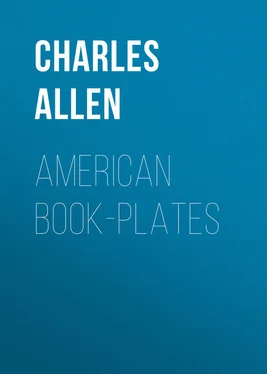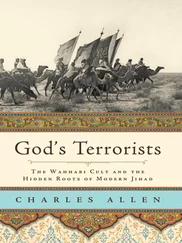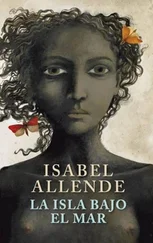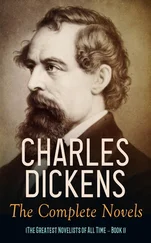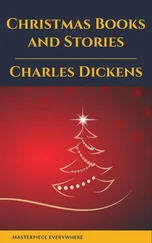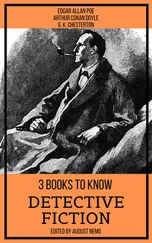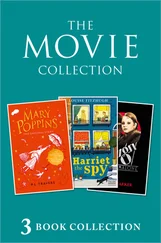Charles Allen - American Book-Plates
Здесь есть возможность читать онлайн «Charles Allen - American Book-Plates» — ознакомительный отрывок электронной книги совершенно бесплатно, а после прочтения отрывка купить полную версию. В некоторых случаях можно слушать аудио, скачать через торрент в формате fb2 и присутствует краткое содержание. ISBN: , Жанр: foreign_antique, foreign_prose, на английском языке. Описание произведения, (предисловие) а так же отзывы посетителей доступны на портале библиотеки ЛибКат.
- Название:American Book-Plates
- Автор:
- Жанр:
- Год:неизвестен
- ISBN:http://www.gutenberg.org/ebooks/47682
- Рейтинг книги:5 / 5. Голосов: 1
-
Избранное:Добавить в избранное
- Отзывы:
-
Ваша оценка:
- 100
- 1
- 2
- 3
- 4
- 5
American Book-Plates: краткое содержание, описание и аннотация
Предлагаем к чтению аннотацию, описание, краткое содержание или предисловие (зависит от того, что написал сам автор книги «American Book-Plates»). Если вы не нашли необходимую информацию о книге — напишите в комментариях, мы постараемся отыскать её.
American Book-Plates — читать онлайн ознакомительный отрывок
Ниже представлен текст книги, разбитый по страницам. Система сохранения места последней прочитанной страницы, позволяет с удобством читать онлайн бесплатно книгу «American Book-Plates», без необходимости каждый раз заново искать на чём Вы остановились. Поставьте закладку, и сможете в любой момент перейти на страницу, на которой закончили чтение.
Интервал:
Закладка:
Charles Dexter Allen
American Book-Plates / A Guide to their Study with Examples
IN a few years Book-plate literature will have a place in the catalogues of the Libraries, as it now has in those of the dealers in books. The works of the Hon. J. Leicester Warren (Lord de Tabley), Mr. Egerton Castle, and Mr. W. J. Hardy on the English plates, Mr. Walter Hamilton, M. Henri Bouchot, and M. Poulet-Malassis on the French, Herr Warnecke on the German, and M. Carlander on the Swedish, are all the work of master hands, and are recognized as authorities. In our own country the lists and essays of Mr. Richard C. Lichtenstein and Mr. Laurence Hutton have long been of invaluable service, and occupy a position both at home and abroad of undisputed eminence.
A large number of articles has also been contributed to periodical literature by those well informed upon the subject, and numerous monographs testify to the growth of interest in this fascinating study, and by the names of their authors, to the class of scholars and students of antiquarian lore who deem the humble book-plate worthy of their attention.
In view of what has been and of what will be written, this present modest attempt to introduce more fully than has yet been done, the book-plates of America, needs to be understood as simply a pioneer work; a great deal of information will reward the patient and painstaking investigator of the future, which is now inaccessible, and without doubt, too, much will be found even within the present to supplement these pages.
This book could not have been undertaken nor carried to completion had the writer been denied the generous assistance and hearty sympathy of our collectors, to whom he desires to express his appreciation of the kindnesses shown him.
Especially to Mr. R. C. Lichtenstein, Mr. E. N. Hewins, and Mr. Fred J. Libbie of Boston, does he feel under deep obligation for the generous loan of their splendid collections, for ready advice and counsel, for cheerful assistance whenever asked for, and for that tangible sympathy and lively interest which are worth so much to one engaged in such work. To many others also is he indebted, both for the loan of plates and for kindly words of encouragement.
To Mr. S. P. Avery, Mr. Beverly Chew, Mr. E. H. Bierstadt, Mr. Henry Blackwell, Mr. D. McN. Stauffer, Mr. Edward D. Harris, Mr. Laurence Hutton, and Mr. E. W. Nash, of New York City; to Mr. W. G. Brown of Washington and Lee University at Lexington, Va.; Mr. H. E. Deats of Flemington, N.J.; Dr. C. E. Clark of Lynn; Hon. W. A. Courtnay of Charleston, S.C.; Miss Helen E. Brainerd of the Columbia College Library; Mr. Pickering Dodge of Washington, D.C.; Mr. Charles T. Martin, Mr. Frank B. Gay, Mr. A. C. Bates, and Mr. John C. Parsons, of Hartford; Dr. Henry C. Eno of Saugatuck; Dr. J. H. Dubbs of Lancaster, Penn., President of Franklin and Marshall College; Mr. D. V. R. Johnston of the State Library at Albany; Mr. Nathaniel Paine of Worcester; Mr. Daniel Ravenel of Charleston, S.C.; Mr. Howard Sill of Glendale, Md.; Mr. R. A. Brock of Richmond, Va.; Mr. Howard Edwards of Philadelphia; Dr. Swan M. Burnett of Washington, D.C.; Mr. Richard Wijnkoop of Brooklyn; Mr. Bisbee of Dartmouth College; Mr. William Kelby of the New York Historical Society; and to Mr. Lyon G. Tyler of Williamsburg, Va., President of William and Mary College, does he wish to make acknowledgment for the favors which have contributed so much to the value of the work. From over the sea, particularly kind assistance has come from Rev. T. W. Carson, the veteran collector and eminent authority of Dublin.
To all others who by letter, gift, or advice have assisted him, the writer wishes hereby to make suitable and hearty acknowledgment.
The writer’s thanks are also extended to those who have so kindly permitted him the use of their plates for the illustrating of the book.
A word more is due to Mr. E. N. Hewins, who very kindly, at the writer’s request, accepted the labor of preparing the excellent Bibliography which appears in the volume.
CHARLES DEXTER ALLEN.Hartford, Conn., June, 1894.
INTRODUCTORY
WE cannot venture to guess which was the first book-plate made in America, nor to say with absolute certainty whence came the first plate used in our country; but undoubtedly the latter came over already pasted into some book of a Dutch or English settler.
The larger part of our books came from England, and very few plates are found with arms of other nationalities. The colonists who came from England bringing books, brought also the home ideas concerning books, and the book-plate was a natural piece of property to acquire. Their descendants, who continued the connection with the mother-country, used plates more generally, and the fashion spread naturally. It never became very general, but was confined to those of gentle birth; the clergy, the lawyers, and men of education. We shall see that it was not confined to the men alone, but that the women of literary accomplishments also used plates.
By far the greater part of the plates are cut on copper, but there are some woodcuts as will be seen in an examination of the list; also, there are some which look as if cut in silver, which was an easier metal to work, or perhaps in type-metal. One example is known in which brass was used, and this old plate is now in the possession of the writer. The steel engravings are of rather recent date; and while there are a number of these, the new plates are mostly on copper. The simple labels are printed from type.
The larger part of our early plates are armorial in character; and while heraldry forms so prominent and important a feature, it is left practically untouched in the present volume. The number interested in the science is small, the authorities on coats-of-arms and on blazoning differ, and the present writer had not the time to make the thorough investigation necessary to a satisfactory treatment of this interesting branch. Upon consultation with other collectors, and with their advice, it was decided to leave this subject for a future volume should any call for it arise.
A decided difference is noticed between the book-plates of the Northern and the Southern Colonies. In the South, to which came men of wealth and leisure with cultivated tastes, we would expect to find the little superfluities and niceties of daily life sooner in vogue and more generally used. Bringing books and musical instruments with them, retaining their connection with the far-away home by correspondence and visits, sending their sons to the great Universities to be educated, and to the Law Schools for a finishing course, and ordering their clothes, books, furniture, and all of the luxuries of life from England, they would naturally be the first to use the book-plate. Very few of the Southern plates were engraved by American engravers. They were nearly all done in London, when some member of the family was over, or by order from the Colony; for this reason the Southern plates are better in heraldry, design, and execution than those of New England and New York. They were the product of men experienced in such work; they were all armorial and in the prevailing English mode.
The earliest comers to New England had a prejudice against coats-of-arms and trinkets of such-like character, which their descendants, however, soon forgot. Pride of ancestry and love of the display of aristocratic claims developed when the hard circumstances of the former years had worn off, and we find the prominent families of the North using book-plates, and having their arms upon their coaches. In one important feature, however, these Northern plates differ from the Southern, – they are mostly the work of our native engravers, very few being done in England.
The work of these native artisans, who were mostly self-taught in this art of engraving on copper, is confessedly inferior to that of the London experts found upon the Southern plates, both in drawing and execution, but their work is of more value to the collector from this very fact of their being American work. They furnish examples of native skill, both in engraving and in copper-plate printing.
Читать дальшеИнтервал:
Закладка:
Похожие книги на «American Book-Plates»
Представляем Вашему вниманию похожие книги на «American Book-Plates» списком для выбора. Мы отобрали схожую по названию и смыслу литературу в надежде предоставить читателям больше вариантов отыскать новые, интересные, ещё непрочитанные произведения.
Обсуждение, отзывы о книге «American Book-Plates» и просто собственные мнения читателей. Оставьте ваши комментарии, напишите, что Вы думаете о произведении, его смысле или главных героях. Укажите что конкретно понравилось, а что нет, и почему Вы так считаете.
